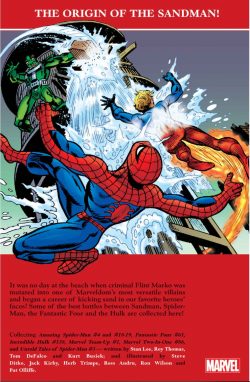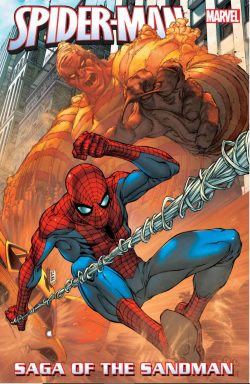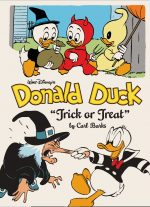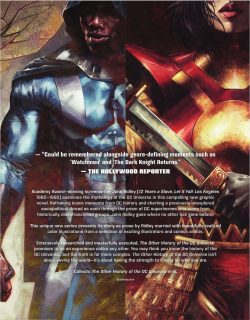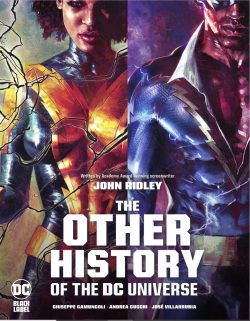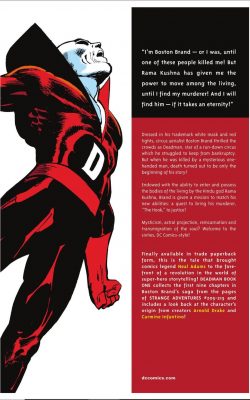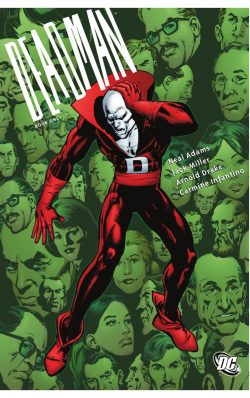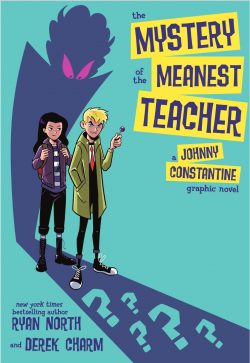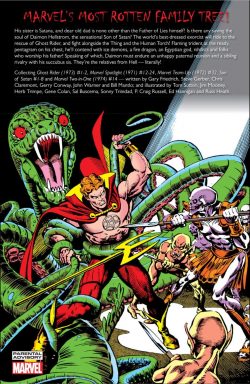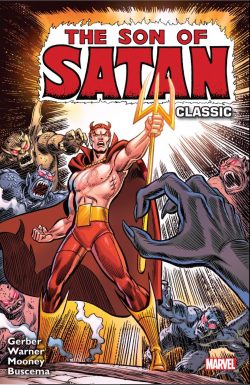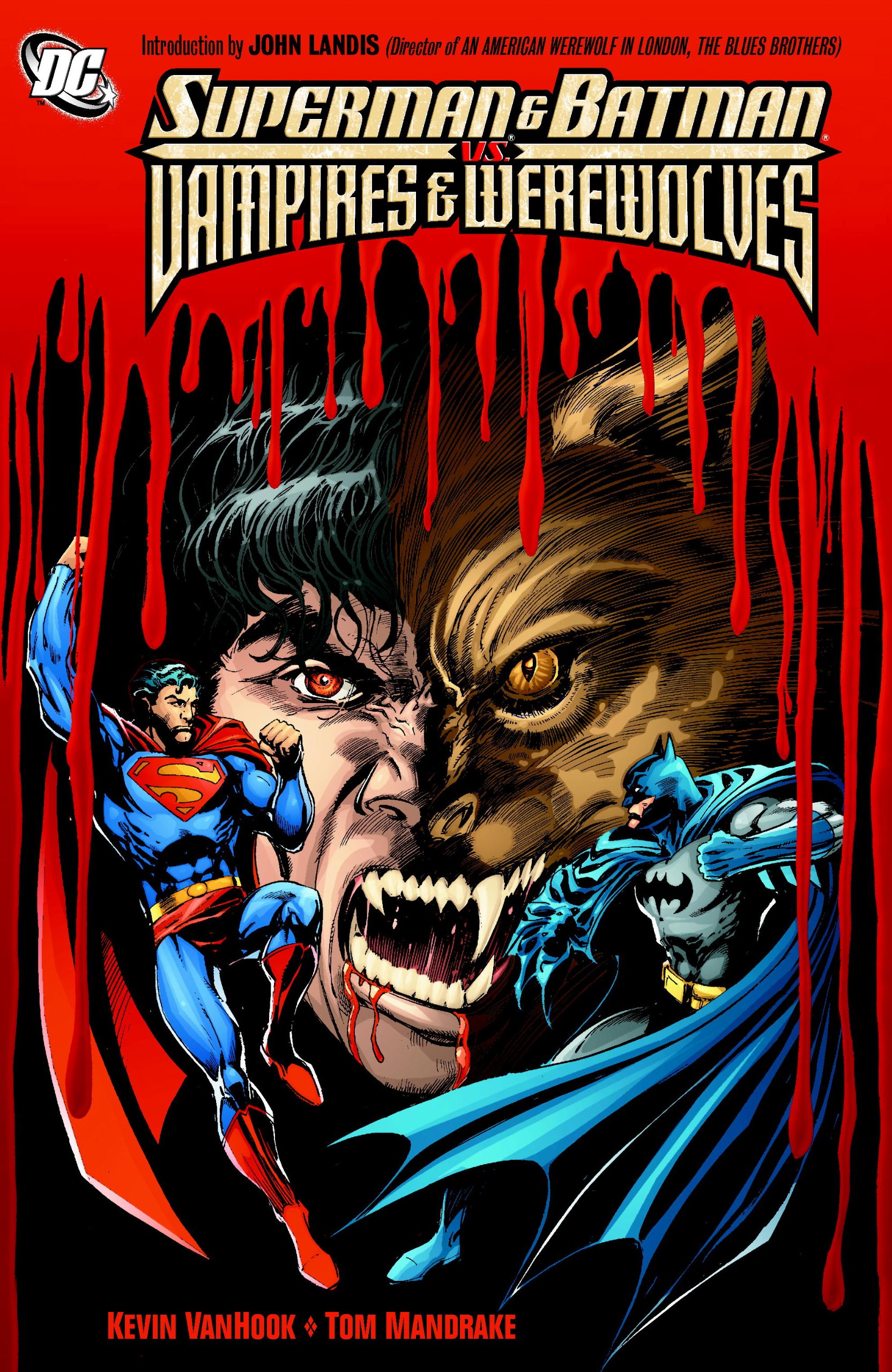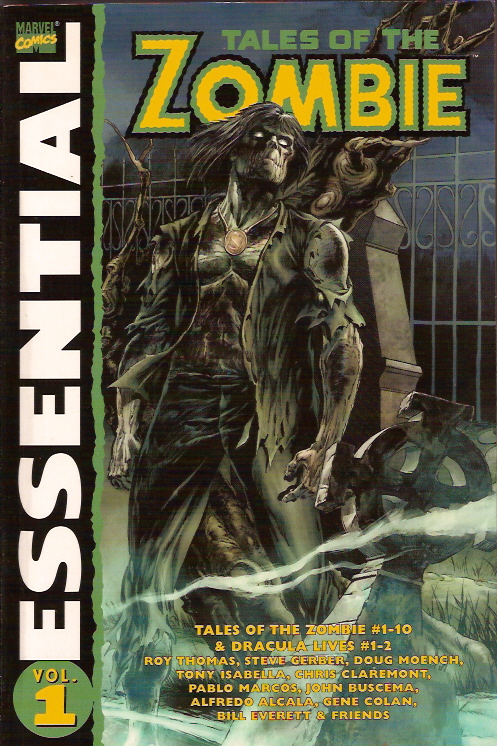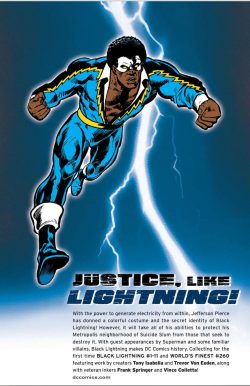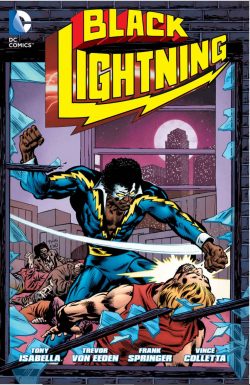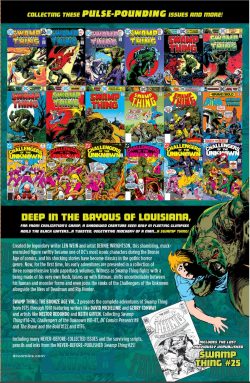
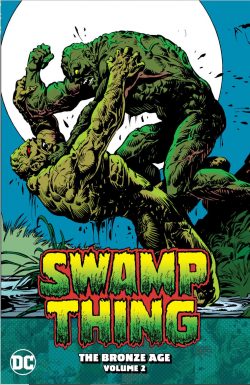
By David Michelinie, Gerry Conway, Carla Conway, David Anthony Kraft, Steve Englehart, Bob Haney, Martin Pasko, Nestor Redondo, Fred Carrillo, Keith Giffen, Michael Netzer, Murphy Anderson, Ernie Chan & various (DC Comics)
ISBN: 978-1-4012-9422-9 (TPB/Digital edition)
Win’s Christmas Gift Recommendation: Utter Moodily, Moss-Bedecked Entertainment Perfection… 9/10
The first fan-sensation of the modern era – now officially enshrined as the Bronze Age – of American comic books – Swamp Thing has powerful popular fiction antecedents and in 1972 was seemingly a concept whose time had come again. Prime evidence was the fact that Marvel were also working on a man-into-mucky, muddy mess character at the very same time.
Both Swampy and the Macabre Man-Thing were thematic revisions of Theodore Sturgeon’s classic novella It, and bore strong resemblances to a hugely popular Hillman Comics star dubbed The Heap. He/it sloshed through the back of Airboy Comics (née Air Fighters Comics) from1943 onwards and my fan-boy radar suspects Roy Thomas’ marsh-monster the Glob (from Incredible Hulk #121, November 1969 and #129, June 1970) either inspired both DC and Marvel’s creative teams, or was part of that same zeitgeist.
It should also be remembered that in the autumn of 1971 Skywald – a very minor player with big aspirations – released a monochrome magazine in their Warren Comics knock-off line entitled The Heap.
For whatever reason, by the end of the 1960s superhero comics were in another steep sales decline, again succumbing to a genre boom led by a horror/mystery resurgence. A swift rewriting of the Comics Code Authority augmented the changeover and at National/DC, veteran EC comics star Joe Orlando became editor of House of Mystery and sister title House of Secrets.
These returned to short story anthology formats and gothic mystery scenarios, taking a lead from TV triumphs such as Twilight Zone and Rod Serling’s Night Gallery.
Referencing the sardonic narrator/storyteller format of those EC horror titles, Orlando created Cain and Abel to shepherd readers through brief, sting-in-the-tail yarns produced by the best new and established creators the company could hire. Artists Neal Adams, Mike Kaluta, and especially Bernie Wrightson produced some of their best work for these titles, and the vast range of spin-offs the horror boom generated at DC.
The 12th anthology issue of the resurrected House of Secrets (#92, June/July 1971) cemented the genre into place as the industry leader. There writer Len Wein & Wrightson produced a throwaway gothic thriller set at the turn of the 19th century, wherein gentleman scientist Alex Olsen was murdered by his best friend with his corpse dumped in a swamp.
Years later, Olsen’s beloved bride – now the unsuspecting wife of the murderer – was stalked by a shambling, disgusting beast that seemed to be composed of mud and muck…
The tale struck an immediate chord with the public. That issue was the best-selling DC comic of that month, and reader response was fervent and persistent. By all accounts, the only reason there wasn’t an immediate sequel or spin-off was that the creative team didn’t want to produce one. Eventually however, bowing to interminable pressure, and with the sensible idea of transplanting the concept to contemporary America, Swamp Thing #1 appeared on newsstands in the Spring of 1972. It was an unqualified hit and instant classic…
Wein & Wrightson produced 10 issues together: an extended, multi-chaptered saga of justice and vengeance encompassing a quest for answers that was at once philosophically typical of the time and a prototype for the story-arc and mini-series formats that dominate today’s comics. They also used each issue/chapter to pay tribute to a specific sub-genre of timeless horror story whilst advancing the major plot…
When Alec and Linda Holland retreated deep into the Louisiana Bayou to work on a bio-restorative formula to revolutionise global farming, they had no idea criminal organisation “The Conclave” was after their research. Despite the best efforts of Secret Service agent Matt Cable, the lab was bombed and Linda died instantly. Alec – showered with his own formula and blazing like a torch – hurtled to a watery grave in the swamp. He did not die…
Transformed by the formula (and remember, please, this was prior to Alan Moore’s landmark re-imagining of the character) Holland transformed into a huge man-shaped thing: immensely strong, barely able to speak, and seemingly composed of living plant matter. Holland’s brain still functioned, however, and he vacillated between finding his wife’s killers and curing his own monstrous condition. Cable, misinterpreting the evidence, became obsessed with killing the beat, believing it caused the deaths of his two friends and charges…
Swamp Thing travelled the world, encountering the darkest outbreaks of classic supernature and the insatiable greed of human beasts before eventually convincing Cable of his innocence and true identity. Joined by Abigail Arcane – niece of archenemy and necromantic sorcerer Anton Arcane – they roamed a nation and world increasingly beset by uncanny terrors and macabre plots, with new allies like mystery man Bolt at their side.
Wein’s last issue was #13, having ushered in a new direction for Nestor Redondo – who replaced Wrightson with #11 – to display his own gifts and quickly become the artistic driving force.
Born in 1928 at Candon, Ilocas Sur in the American Territory of the Philippines, Redondo was influenced by US strips like Tarzan, Superman, Buck Rogers and Flash Gordon which were immensely popular in the entertainment-starved Pacific Archipelago.
Drawing from an early age, Nestor emulated his brother Virgilio – who worked as a comics artist in the young country. The Philippines became a commonwealth in 1935, and achieved full-independence from the USA in 1946, but maintained close cultural links to America.
Nestor’s parents pushed him into architecture but within a year he returned to comics. A superb artist, he far outshone Virgilio – and everybody else – in the cottage industry. His brother switched to writing and they teamed up: producing some of the best strips the Islands had ever seen, the most notable and best regarded being Mars Ravelo’s Darna.
Capable of astounding quality and incredible speed, by the early 1950s Nestor was drawing for many titles. Publications like Pilipino Komiks, Hiwaga Komiks and Espesial Komiks were fortnightly and he usually worked on multiple series simultaneously, pencils and inks. He also produced a wealth of covers.
In 1953, he adapted MGM film Quo Vadis for Ace Publications’ Tagalong Klasiks #91-92. Written by Clodualdo Del Mundo, it was serialized to promote the movie in country, and impressed MGM so much that they offered 24-year old Nestor a US job and full residency. He declined, thinking himself too young to leave home yet.
Ace was the country’s biggest comics publisher, but by the early 1960s they were in dire financial straits. In 1963 Nestor, Tony Caravana, Alfredo Alcala, Jim Fernandez, Amado Castrillo and brother Virgilio set up their own company CRAF Publications, Inc., but times were against them and publishers everywhere. Around this time, America called again, in the form of DC and Marvel Comics.
By 1972, US based Tony DeZuñiga had introduced Filipino artists to US editors. Nestor drew horror tales for House of Mystery, House of Secrets, The Unexpected, Phantom Stranger, Secrets of Sinister House, Witching Hour, Weird War Tales; Marvel’s Man-Thing; and an astonishingly lovely run on Rima the Jungle Girl (loosely adapting W. H. Hudson’s seminal 1904 novel Green Mansions), before joining Swamp Thing.
He also worked on Lois Lane and the Tarzan franchise, and in 1973 produced literary adaptations including Dracula and Dr. Jekyll and Mr. Hyde for Vincent Fago’s Pendulum Press Illustrated Classics (later reformatted as Marvel Classics Comics). In later years, he moved to Marvel to ink and eventually fully illustrate The Savage Sword of Conan.
During his DC period he was tapped to draw an adaptation of King Arthur which DC killed before it was completed (once again some pages survive and the internet is your friend if you want to see them) but did limn tabloid-sized Limited Collectors’ Edition: The Bible.
This epic bayou bonanza gathers the last of the original Swamp Thing run (#14-25), plus guest appearances from Challengers of the Unknown #81-87; The Brave and the Bold #122 & 176 and DC Comics Presents #8 (spanning cover-dates January/February 1975 to July 1981) .
Roving America during a period of political instability tainted by cultural hedonism and paranoia, Cable, Abby, Bolt and miserable misshapen Alec Holland (whom they had recently broken out of federal custody) continually stumbled into weird and deadly situations. With writer David Michelinie joining Redondo, proceedings open here with ‘The Tomorrow Children’ (ST #14, January/February 1975).
Separated again, Holland’s human helpers search for him as the depressed nomad discovers an isolated Bayou community of simple folk persecuting a family of freakish kids. Swamp Thing drives off one murderous mob, but stories of the outcast kids’ uncanny powers and the plain facts of strange accidents and mysterious disappearances won’t go away. By the time the townsfolk return to destroy the “demon children”, Holland has discovered radioactive waste is causing all the problems, but far too late to prevent tragedy or promote understanding…
Swamp Thing then falls under ‘The Soul-Spell of Father Bliss’: a seemingly serene and benign cleric with demonically disturbing notions on how to restore faith to his disinterested flock. When Cable and Abby finally find Swamp Thing, it’s not Alec Holland inside the vegetable colossus and only an ultimate sacrifice can save them and humanity from the priest’s folly…
In the awful aftermath, Bolt is captured by agents unknown and the restored Holland-Thing leads a rescue party against an old adversary. Typically, the venture is derailed by cruel fate and the monster ends up alone on tiny Kalo Pago island in the middle of a revolution. On one side is a viciously repressive military government while the rebels are led by High Priestess Laganna – who has a direct line to zombie gods.
Caught in the middle, Holland cannot stem the tide of terror on the climactic ‘Night of the Warring Dead’…
ST #17 finds Bolt a prisoner of resurrected former Conclave chief Nathan Ellery, but when Abby, Cable and Swamp Thing finally stumble into his HQ, the maniac’s mercenaries, mechanical myrmidons and global mind-control contraption ‘The Destiny Machine’ at first appear to be an unbeatable opposition. But only at first…
Fleeing the destruction they have partially wrought, the victorious heroes crash land in an idyllic hamlet filled with violently murderous old folk. Its apologetic administrator claims Serenity is an experimental “ultimate retirement facility”, but before long is revealed as a demonic ‘Village of the Doomed’ requiring all Holland’s power to escape and exorcise…
Cover-dated October 1975, The Brave and the Bold #122 then counts down ‘The Hour of the Beast!’ Bob Haney & Jim Aparo detail the awesome spectacle of Swamp Thing’s return to Gotham City and efforts to save it from a monstrous vegetable infestation. When Holland then becomes a target for a profit crazed showman, it needs all Batman’s ingenuity to save his ally and his city…
That same month in Swamp Thing #19, Gerry Conway joined Redondo to reveal ‘A Second Time to Die’ as a very familiar muck monster prowls Florida’s Everglades and – barely sentient – is befriended elderly Seminole hermit Ho’tah Makanaw. Nearby, Abby Cable and Bolt drive into Gatorberg, seeking their lost companion and following rumours of a big green monster…
The town is far from friendly but one boy is happy to take them to the old Indian who might know something of what they’re seeking…
Events take a drastic turn when the plant giant attacks a government drilling installation even as Ho’tah reveals a magical secret and sets the stage for an incredible clash in the next issue when Swamp Thing Holland battles incredible duplicate ‘The Mirror Monster’ for all the wrong reasons and for people who don’t deserve his aid…
Although the quality of the storytelling was getting better, the times were turning against the horror medium and as Michelinie returned in #21, it was for a science fictional romp as Holland was abducted by alien collector/slaver Solus. The bitterly contested escape left the monster stranded in an American desert and captured by rogue scientists battling madness-inducing contagion in their top secret atomic weapons base. Of course, definitions of “victim” or “cure” for ‘The Solomon Plague’ depended on who was doing the diagnosing, and when the “patients” started resisting treatment Holland could only watch helplessly as nature took its course…
Another attempt at a new direction began in Swamp Thing #23 as Conway & Redondo unleashed ‘Rebirth and Nightmare’, with a mystery mastermind targeting the moss monster and despatching costumed nemeses Sabre and Thrudvang, the Earth Master, even as the lonely wander made contact with his long-lost – and never-mentioned – smarter brother Edward Holland…
Their combined efforts to concoct a cure are initially successful despite Sabre’s surprise attack, but as we all know “no good deed goes unpunished”…
Cover-dated August/September 1976, an era ended with #24 as Conway, David Anthony Kraft, Ernie Chan & Fred Carrillo all collaborated on ‘The Earth Below’ as human but still traumatised Alec Holland faces Sabre, even more costumed crazies and ultimately tectonic terror Thrudvang, all craving the bio-regenerative formula still afflicting the former plant monster…
That catastrophic cliffhanger clash was never completed as the title was cancelled without warning or fanfare, just as it was about to formally join the superhero section of the DCU. It was probably for the best. As the Vertigo imprint would prove in a later age, some champions need sophisticated darkness to properly thrive…
As for the Bronze Age, Swamp Thing became a part of the army that hung around waiting to be picked for guest shots or even a revival. With the superhero genre recovering, one old concept granted a new shot ultimately led to fresh shoots for Holland.
The Challengers of the Unknown was a bridging concept. As superheroes were being revived in 1956 here was a super-team – the first of the Silver Age – but with no powers, basic utilitarian uniforms instead of costumes and the most dubious of motives – Suicide by Mystery. They debuted in Showcase #6 (cover-dated February 1957 and on sale in early November of 1956) and followed up in #7, 11 & 12 before gaining their own title (#1-77, May 1958-January 1971, plus a reprint revival in #78-80 in 1973).
They were a huge hit and major players in their time, striking a chord that lasted for more than a decade before they finally died… only to rise again and yet again. The idea of them was stirring enough, but their situation made their success all but inevitable. Conceived by inspirational human hit-factory Jack Kirby – before his move across town to co-create the Marvel Universe – the solid adventure concept and imperfect action heroes he left behind were idealised everyman characters for the tumultuous 1960s – an era before superheroes overtook anthological genre heroes to secure a virtual chokehold on comic book pages.
Kirby had developed a brilliantly feasible concept and heroically archetypical characters in cool pilot Ace Morgan, indomitable strongman Rocky Davis, intellectual aquanaut “Prof.” Haley and daredevil acrobat Red Ryan. The Challengers of the Unknown were four (extra)ordinary mortals; heroic troubleshooter and explorers who walked away unscathed from a terrible plane crash. Already obviously what we now call “adrenaline junkies”, they communally decided that since they were all living on borrowed time, they should dedicate what remained of their lives to testing themselves and fate. The quartet would risk their lives for KNOWLEDGE and, naturally, JUSTICE.
They were joined by an occasional fifth member, beautiful (of course) scientist June Robbins in their second appearance (‘Ultivac is Loose!’ in Showcase #7, March/April 1957), and she became a hardy perennial, frequently popping up to solve puzzles, catch criminals and generally deal with aliens, monsters, mad boffins and assorted supernatural threats. Over the decade other Challengers audited this core group, but none as bizarre as those that popped in during their late 1970s resurgence…
The return began in 1976 as a try-out serial in Super-Team Family #8-10 (January-May 1977) and led to the launch of Challengers of the Unknown #81 (June/July 1977). Crafted by Conway, Michael Netzer (nee Nasser) & Bob Wiacek, it’s included here and sees the boys and June Robbins defeat an old super-foe in ‘Multi-Man’s Master Plan’. In the course of the battle, Prof is diagnosed with an appalling, life-threatening fungal infection that dictates the team heading to Perdition, Pennsylvania, with persistent wannabe hanger-on Gaylord Clayburne desperately seeking to insert himself into the rescue mission…
Older fans will know that’s where Holland first defeated a Lovecraftian horror (Swamp Thing #8): a tale fully reprised in CotU #82, as Conway, Netzer & Joe Rubinstein reveal ‘The Lurker Below’, examine the ‘Legacy of the Damned’, expose ‘The Soul Predator’ and ruthlessly respond as ‘The Lurker Rises’…
As a deranged priest seeks to manifest cancer-god M’Nagala, Keith Giffen & John Celardo take over art duties with #83 as the embattled Challs seek to close ‘Seven Doorways to Destiny’. As Prof succumbs to fungal assimilation, aid comes as Clayburne recruits human Dr. Alec Holland as a potential ‘Savior from the Swamp?’ even as ‘The Gods Crawl Closer’. Unknown to the vainly striving Challengers, the subsequent battle reverts Holland to his vegetable form, but ‘Monsters, Good and Evil’ cannot stop the ghastly devil until Holland’s ultimate sacrifice. His triumph over M’Nagala goes completely unnoticed…
Issue #84 finds the human heroes attempting ‘To Save a Monster’ called Prof Haley, but falter until the spirit of Boston Brand occupies and cures him ‘When Deadmen Walk’. In the meantime the Challs learn Holland is the Swamp Thing and seek to make amends. With unperceived aid from Brand, they track the bog beast down only to find he/it has been taken over by Multi-Man…
The threat is covertly countered by Deadman, who sticks around when the Challs offer the plant monster a place on the team, just as Challengers of the Unknown #85 introduces ‘The Creature from the End of Time!’ as ‘The Box from Beyond’ materialises in Toronto, spawning murderous ‘Monsters and Men’ and necessitating a ‘Flight into the Future’…
The team had hoped to consult legendary specialist Rip Hunter, Time Master, but learn he and his team have been missing for a decade…
Disappointed but undeterred, the Challs (minus angry quitter Red Ryan but with unsuspected stowaway Deadman) take off for 12 million AD, leaving recuperating Prof behind to face an unsuspected menace…
Penultimate issue #86 solves the mystery of Rip Hunter as the heroes encounter ‘The War at Time’s End’, whilst recap ‘The Way it Began’ restates the convoluted path and events that brought the situation about.
The dismantling of humanity’s final dystopia begins as ‘If This is Tomorrow, You Must Be Rip Hunter!’, leads to the Challenger team investigating ‘Time Times Terror’ and discovering ‘A Pit by Any Other Name’ before the saga concludes in complete chaos with #87 (June/July 1978) as the ‘Twelve Million Years to Twilight’ pits the human heroes against mutated terrors of the dominant Sunset Lords.
In the end, the future of humanity depends on monsters ghost and primitives enacting an ‘Assault on Sunset’ to secure ‘Twilight’s Last Glimmer’, courtesy of Carla & Gerry Conway, Giffen & Celardo.
Once again, an abrupt cancellation was the reward for valorous service and all players returned home to be shelved again. This compendium closes with a brace of superhero team-ups and a lost treat for true devotees, beginning with DC Comics Presents #8 (April 1979), as ‘The Sixty Deaths of Solomon Grundy!’ by Steve Englehart & Murphy Anderson pairs bog beast with the Man of Steel. Still believing he was a transformed human and not an enhanced plant, Swamp Thing here searches the sewers of Metropolis for a cure to his condition, only to stumble onto a battle between Superman and the mystic zombie who was “born on a Monday…
Crafted by Martin Pasko & Aparo, an encore in The Brave and the Bold #176 (July 1981) reunites Batman and Swamp Thing in a convoluted tale of Bayou-based murder and frame-ups in ‘The Delta Connection’ before the previously unpublished contents of Swamp Thing #25.
With the series cancelled, in-production story ‘The Sky Above’ by Kraft, Chan & Carillo is presented here as plot, script, uncoloured cover 16 pages of layouts, the pencils and inks in a clash with Hawkman that really should have officially taken place…
Also offering covers by Redondo, Aparo, Chan, Netzer, Neal Adams, Rubinstein, Rich Buckler, Jack Abel, Frank Giacoia, Alex Saviuk, Dick Giordano, José Luis García-López and Mike Kaluta; editorial material from Challengers of the Unknown #86 and an unused cover by Rick Veitch & Michelle Madsen, this collection comprises a genuine landmark of the art form, with stories that are superb examples of old-fashioned comics wonderment, from a less cynical and sophisticated age, but with a passion and intensity that cannot be matched. And, ooh, that artwork…
If you love comics you must have his buried treasure.
© 1975, 1976, 1977, 1978, 1979, 1981, 2019 DC Comics. All Rights Reserved.
